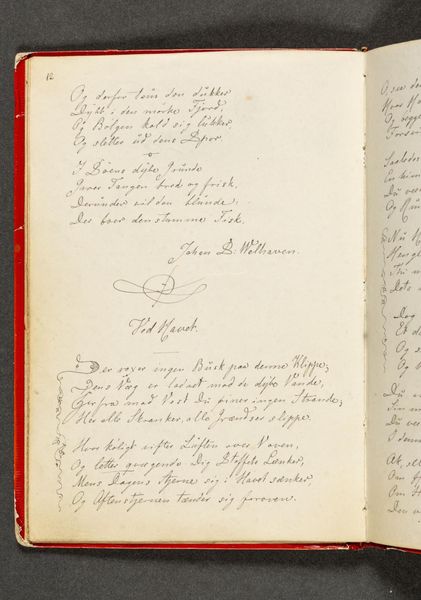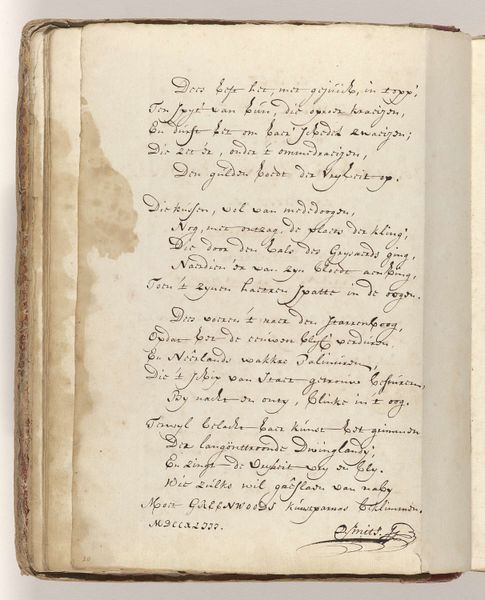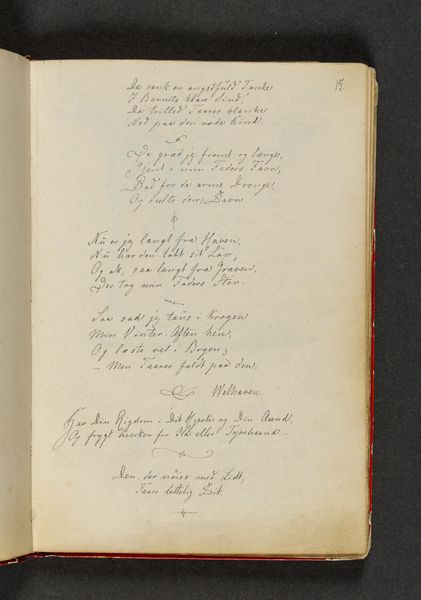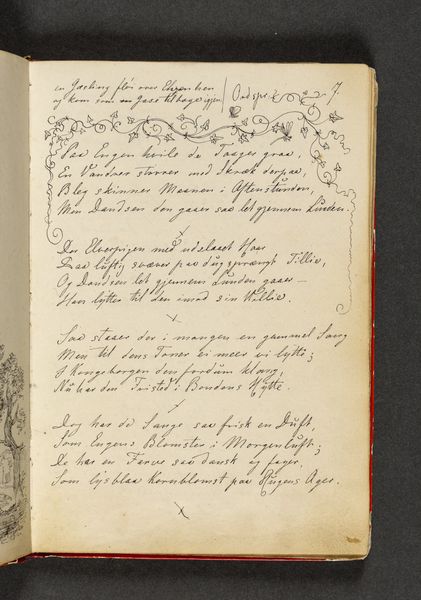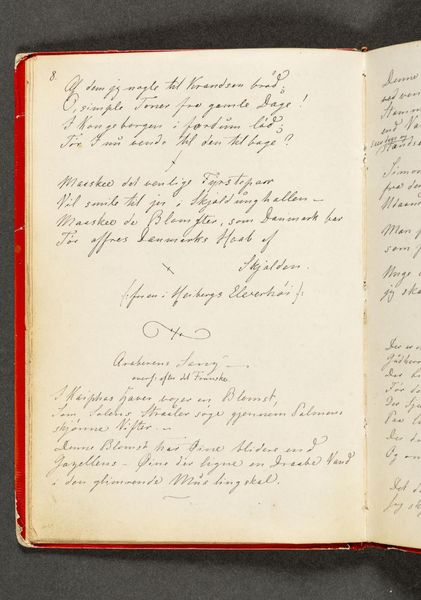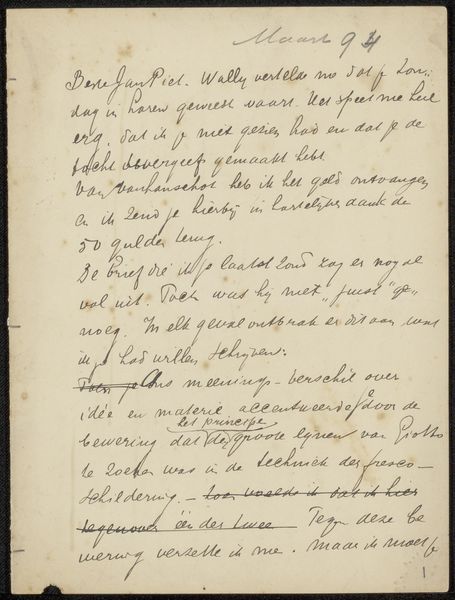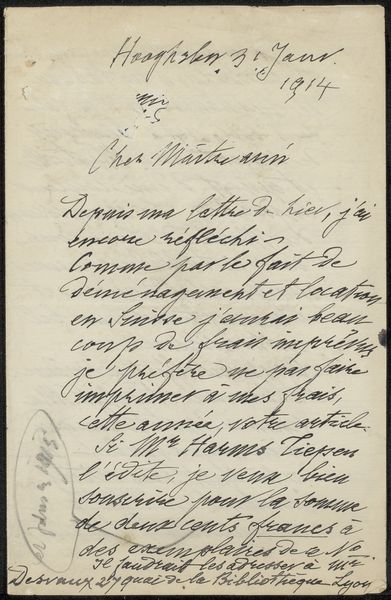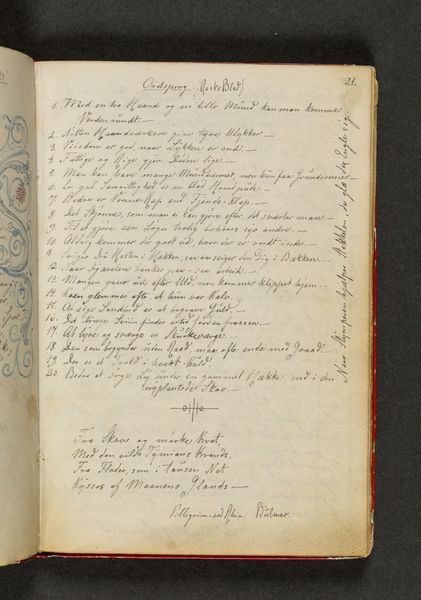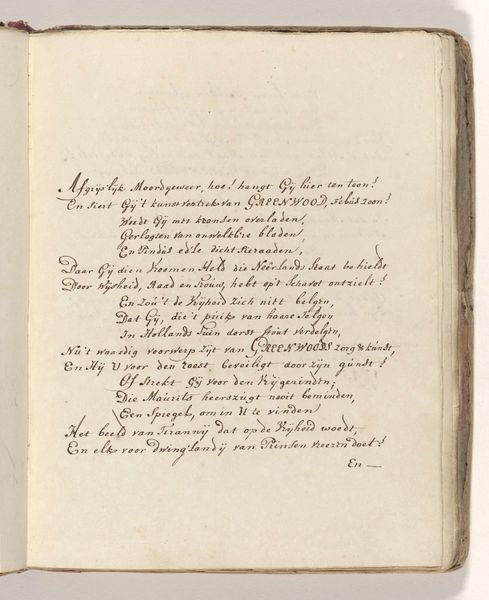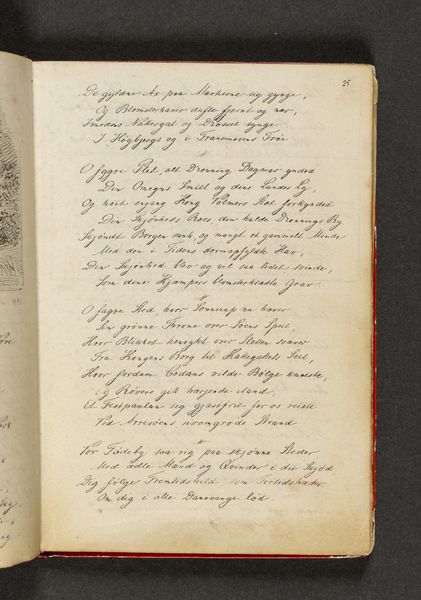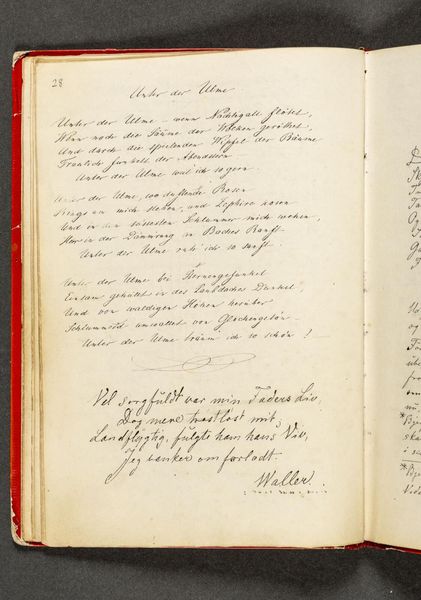
En lilje, der vokser op af et løg (stiliseret). Hertil vers. Side 3 1840 - 1844
0:00
0:00
drawing, textile, paper, watercolor, pen
#
drawing
#
textile
#
paper
#
watercolor
#
romanticism
#
pen
Dimensions: 192 mm (height) x 133 mm (width) (bladmaal)
Editor: This is Johan Thomas Lundbye's "En lilje, der vokser op af et løg (stiliseret). Hertil vers. Side 3," created sometime between 1840 and 1844, using watercolor, pen, and textile on paper. It seems to be a page from a sketchbook or journal, filled with writing and a delicate botanical illustration. What is striking is the intimacy of the piece. What do you notice? Curator: It's fascinating to consider this drawing within the context of the Danish Golden Age. Lundbye, along with other artists, was deeply engaged in exploring national identity and Romantic ideals. This intimate page, with its delicate lily and accompanying verse, becomes a window into the cultural values of the time. How does the inclusion of text alongside the botanical illustration affect your reading of the work? Editor: It almost feels like a personal reflection. Like he was marrying his artistic and poetic sensibilities. It gives a sense of this being about more than just observation of nature. Curator: Precisely. Think about the Romantic movement's emphasis on emotion, individualism, and the power of nature. Lundbye’s choice to combine the visual with the written invites us to consider how the artwork contributes to a larger cultural dialogue, particularly about nature's role in shaping national identity and individual experience during a period of significant social and political change. Editor: So, it’s less about pure botanical illustration and more about weaving nature into the fabric of Danish culture? Curator: Exactly. By juxtaposing the stylized lily with the handwritten text, Lundbye participates in the construction of a shared cultural understanding. It shows that artworks are made not in a vacuum but as part of greater historical discourses. Considering these connections allows for a deeper appreciation. Editor: I see what you mean. This conversation has helped me realize the crucial role context plays in understanding and interpreting a work of art. Curator: And I've found it insightful to see how fresh eyes respond to this piece in our current social landscape.
Comments
No comments
Be the first to comment and join the conversation on the ultimate creative platform.
